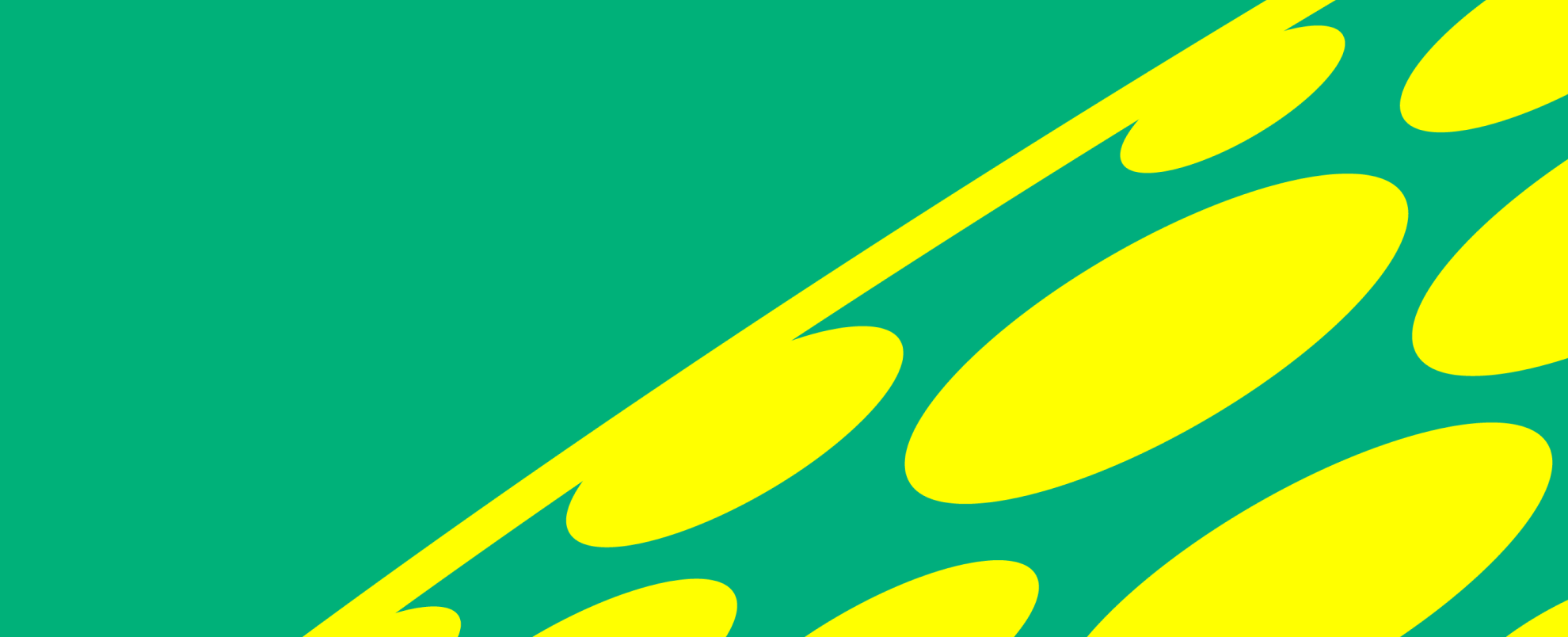Introduction
Generating a deeper understanding of an existing predominantly linear system will identify its shortcomings. To avoid simply patching up this flawed system, it’s crucial to imagine something different: a circular future that is regenerative by design.
Just like with systems, a circular future vision can have a range of different scopes. It’s possible to envision something as complex as an industry, region, city, or organisation. Similarly, it can be useful to envision how a specific product, range, or technology could manifest in a future scenario in which circular economy principles are prioritised.
When people are invited to envision and experience an aspect of the circular economycircular economyA systems solution framework that tackles global challenges like climate change, biodiversity loss, waste, and pollution. It is based on three principles, driven by design: eliminate waste and pollution, circulate products and materials (at their highest value), and regenerate nature., barriers fade away. Imagined scenarios can be used as common ground between people from different disciplines and backgrounds. In this way, circular futures reveal unanswered questions, further avenues to explore, and new collaborations. The imaginative process accelerates the discovery of opportunities that a circular future presents, and helps people to think creatively about the role they play in the journey to get there. As such, this stage is a powerful way to gain buy-in from stakeholders throughout your organisation or value chain.
“Defining what is valuable to an organisation is really the starting point. What are we chasing? What organisations are chasing is entangled in how we understand value, and what is of ‘value’.”
- Joanna Choukeir, Director of Design and Innovation, The RSA
“Value goes beyond economic value, cash value and margin. You have to redefine the value of a company if you want to encompass a total revolution in your organisation, and where you’re going to be moving your organisation towards circular design.”
- Anne Asensio, Vice President of Design Experience, Dassault Systèmes
Making a circular future real and engaging is also a way to confront or provoke people with the characteristics of the transition from linear to circular. Experiences and artefacts act as a catalyst for decision-making, forcing people to think about desirable and undesirable outcomes, and the trade-offs and tensions they may encounter.
“There are so many competing incentives and external conditions that stand in the way of the shift to a circular economy – we need to see the whole picture and help everyone re-orientate towards that future from their starting place.”
- Joanna Choukeir, Director of Design and Innovation, The RSA
This envisioning exercise can also be a prompt for new questions. Designing future scenarios encourages us to ask how an industry, a city, a business, or a product might function in accordance with the principles of a circular economy. We might ask how a project will grow its positive impact – be it through scale, replication, or adaptation to different contexts.
“We’ve been challenging cities and developers, building owners and companies… to look at their building, factory, block, development, or their whole city and say, how can you redesign those spaces so that they are net producers of ecosystem services? We've heard about net positive energy… but I mean, if you're going to be biomimetic, you should function like the ecosystem next door.”
When we iterate on the status quo, for example making an existing product 10% more efficient, we have the experience of past efforts to guide us. When we truly step into the unknown, innovating around fundamentally different principles – for example renting a product rather than selling it, encouraging users to repairrepairOperation by which a faulty or broken product or component is returned back to a usable state to fulfil its intended use. assets, or sourcing ingredients regeneratively – the ambiguity can be overwhelming.
Products and services designed for a circular economy are based on different underlying principles and strategies, and may prompt new behaviours or challenge established norms. They may feel unfamiliar. So at the most practical level, engaging with an imagined invention helps practitioners explore and refine their concepts, offering insights that existing data – likely derived from established practices in the linear economylinear economyAn economy in which finite resources are extracted to make products that are used - generally not to their full potential - and then thrown away ('take-make-waste'). – could never provide. When the pathway forward is ambiguous or obscured, a shared vision offers a reference point or north star to return to for clarification. It can also create clarity about the next small steps or actions to reorient towards that future.
Imagination is a universal human act. Whether intentionally or by instinct, we are constantly imagining different pathways and potential outcomes, to help us make decisions and take actions based on how we feel about those futures. Particularly critical when an organisation is forming their circular economy strategy, designers can use approaches such as speculative design, prototyping, experience design, and creative visualisation, in conjunction with data, to give form to imagined future scenarios – to make them feel ‘real’. From there, we can magnify the practical, emotional, and financial dimensions, and in effect rehearse what it would mean to operate in those alternative scenarios.
How to approach it
Imagine a desirable circular future
Use visualisation methods with a group of actors to imagine a future system or ecosystem embodying the circular economy principles of eliminate, circulate, regenerate. Guide participants through time to think expansively and transformatively beyond today’s linear reality, to imagine a desirable future beyond ourselves, e.g. future generations or other living species. ‘What if’ questions are useful prompts for engaging our imagination and unlocking possibility, Rob Hopkins demonstrates with a great example of imagining the City of London as a National Park.
“We’ve come from a place where businesses were asking ‘how much can we get away with?’ Then we got to ‘ok, how much do we have to do?’. What businesses need to be asking is ‘How much can we possibly give back?’”
- Kate Raworth, Economist and co-founder of Doughnut Economics Action Lab
Convey that future
Collectively explore what’s transformative about those circular economy visualisations, conveying in particular how the system works at different scales (forest, street, neighbourhood, city level) and for every individual and organisation. Use creative methods to communicate and discuss the foundations of that future, and the underlying principles and values which will guide the transformation. It’s important that there’s a shared sense of mission or purpose, beyond the few leading the initiative.
“Designers need to bring circular economy visions to life in a way visions typically aren’t. They should be more emotional and more engaging.”
- Chris Grantham, IDEO Alum (former Executive Director, Circular Economy)
“Designers come with a creative mindset and are natural storytellers – through narrative creation and visualisation they can help motivate others to take action.”
- Jamie Bates, Global Design Leader, Unilever
Question and test the concept
Ask the big or seemingly impossible questions to consider what might be needed to shift the current system closer to the desired one. Do we need to produce another new thing to solve the problem? What no longer serves a purpose in this circular system? What enablers need to be put in place? How does design need to evolve to create balanced ecosystems? How does it need to evolve to create circular, regenerative, and livable places for all? Which actors need to come together to unlock it? And, how will their roles transition as they reorient their ambitions and goals?
“Once the definition of value is taken into account, you can start to think about ‘What does success look like?’ ‘How are we measuring value?’ ‘How do we shift what we're doing, and how do we deliver on these success measures?’ We need impact measures that demonstrate that what we do is replenishing our world, not just sustaining it.”
- Joanna Choukeir, Director of Design and Innovation, The RSA
Creating models and artefacts, stories, or experiences enables us to play out unfamiliar scenarios, to spot opportunities, obstacles, and pitfalls we may otherwise miss and force decisions about what to do next. Using techniques such as future building, and prototyping allow us to explore these dimensions, while acting as a bridge between individuals, teams, and organisations. When combined with communication techniques – including storytelling, animation or experience design – designers can develop powerful visions that immerse people in the possibilities and benefits of a circular economy and create buy-in among system actors.
“Making can provoke imagination and jolt world views.”
- Cat Drew, Chief Design Officer, Design Council
Examples
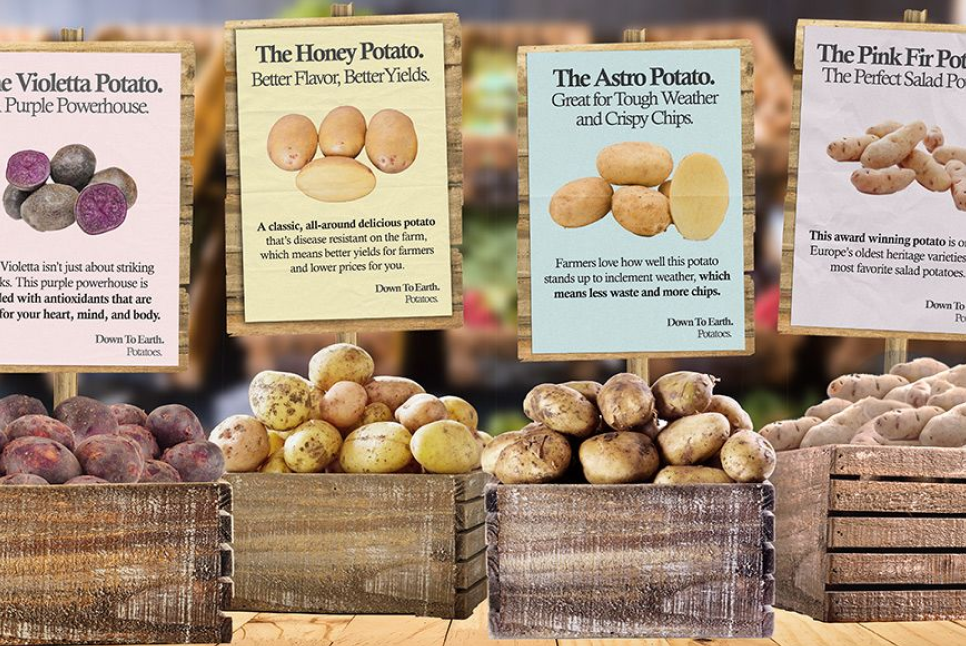
The Big Food Redesign: future products
By: Ellen MacArthur Foundation and Alpha Food Labs
Scope: Food system redesign
Question: What if food could help build biodiversity and tackle climate change?
Approach: Using speculative design methods to imagine, ideate, and storytell nature-positive food systems by rethinking the ingredients used in food products and how they’re produced. This acts as a precursor for rethinking business-as-usual for brands, retailers, and growers.
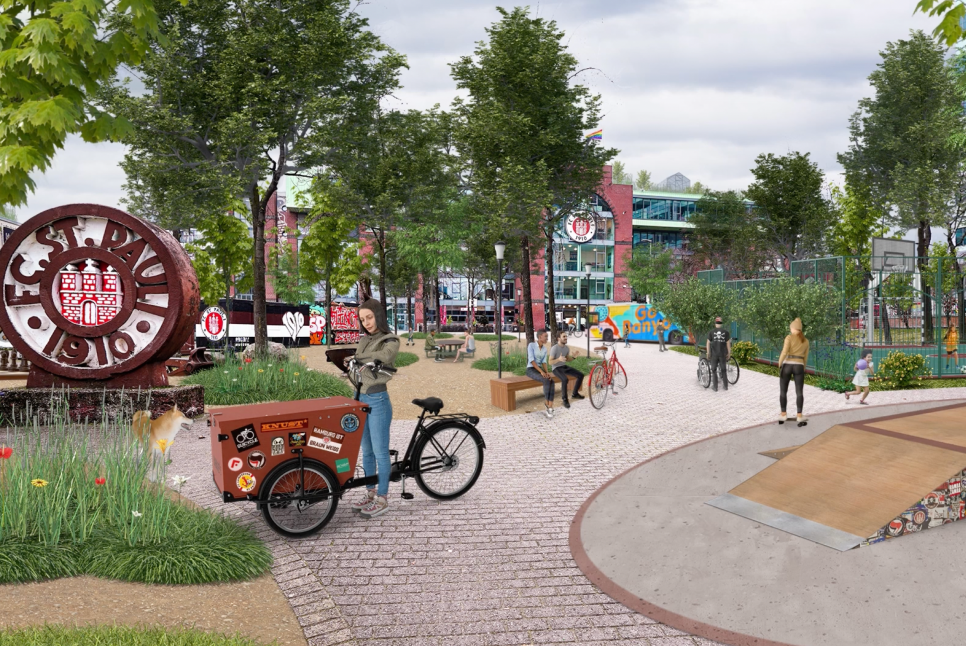
Visual Utopias: Hamburg Millerntor
By: Jan Kamensky
Scope: Public space
Question: What if public spaces enabled citizens and nature to thrive?
Approach: Combining technology and creativity to reimagine public spaces – visualising ideal future scenarios, beyond the limits of today’s reality, to consider what is possible and design the steps needed to get there.
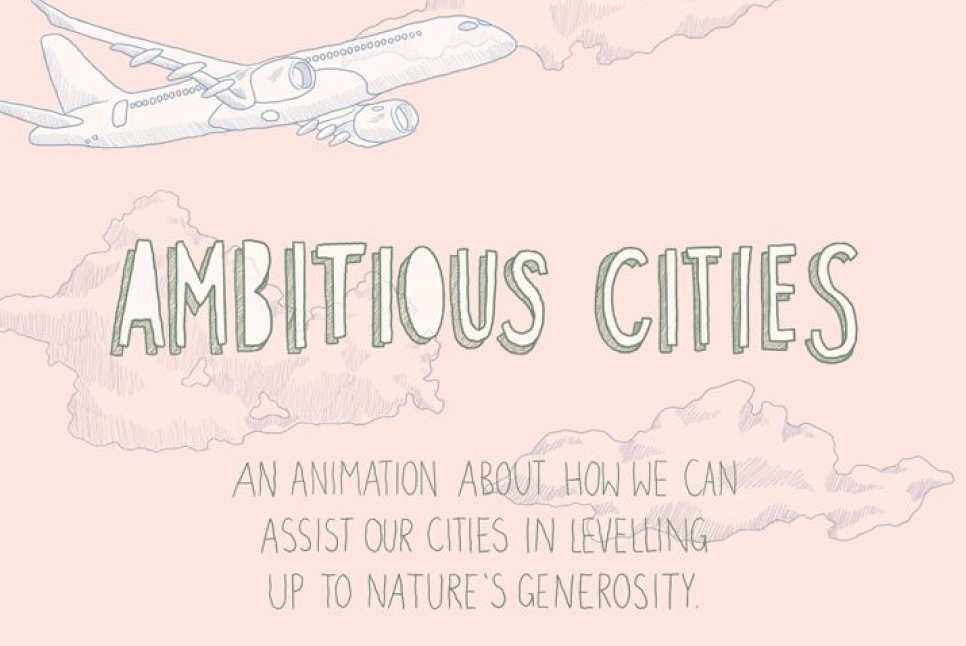
Ambitious Cities
By: Kate Raworth’s Ambitious Cities, animated by Olivia Heseltine, RSA Student Design Awards 2022 Winner
Scope: City
Question: How do we meet the needs of all people within the means of our one planet?
Approach: Using storytelling methods to illuminate future possibilities and immerse the audience in a circular city that meets the needs of people within planetary boundaries. The illustrative animation seeds ideas which can ultimately lead to action.
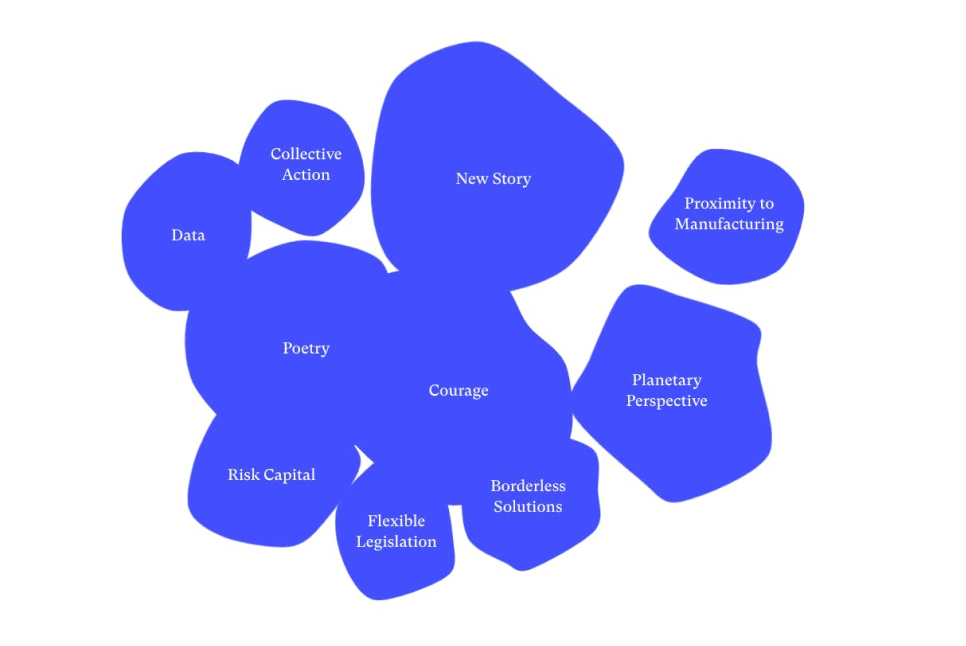
Mission 30 by 2030 - designing our irresistible circular society
By: DDC - Danish Design Center
Scope: National
Question: What is a circular society? And how do we know when we are there?
Approach: Reacting to the lack of a national strategy for creating a circular economy in Denmark, DDC – Danish Design Center gathered 30 circularity experts across sectors to take the first step. With the 30 partners, they defined 10 actions that set a clear direction for how to design our irresistible circular society. These are actions we all must take to design, test, and build solutions that enable a circular future
The Circular Fashion Ecosystem: a blueprint for the future
By: The British Fashion Council’s Institute of Positive Fashion
Scope: Fashion Industry
Question: What could a circular fashion ecosystem look like in the UK?
Approach: A blueprint for a circular fashion ecosystem comprises research and recommendations, alongside the roadmap for change and implementation strategy, to visualise how industry actors could play a role in bringing to life a shared vision of a circular economy for fashion.

Next: Create the conditions for collaboration
Designing the conditions that enable collaboration for a circular economy. Bringing together different perspectives to imagine how the loop might close, while sharing project ownership, benefits and risks.
